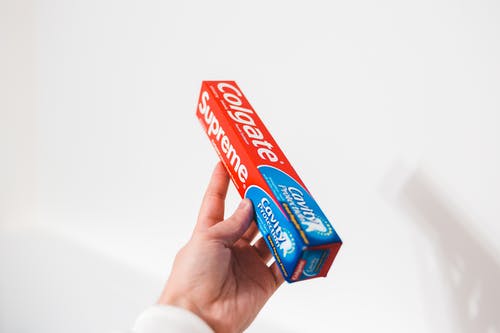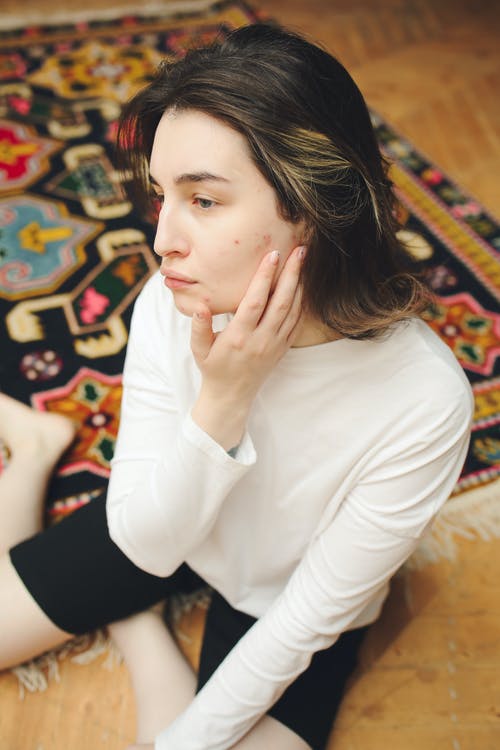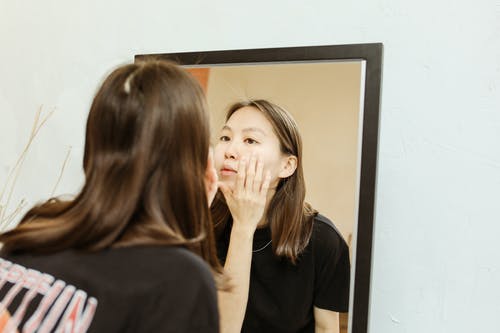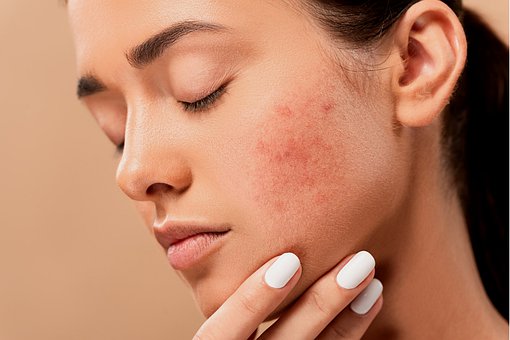If you’ve landowning on this page, there’s a moral chance you’ve been dealing with a frustrating (maybe even painful) pimple and want to know if toothpaste can help heal it. Urban legend says toothpaste is a good “DIY” alternative to other acne treatments for removing a zit overnight if needed. Does it works? Is Toothpaste on Pimples is a good idea? Keep reading to find out!
Does Toothpaste on Pimples really work?
While toothpaste cleans your teeth correctly and kills bacteria in your mouth, it doesn’t work the same on your skin. Applying toothpaste to your skin, especially if you have acne-prone skin, can further irritate existing blemishes and cause more pimples later … ouch! Due to the other active ingredients found in most toothpaste, applying them to the skin can cause skin discoloration (a lighter or darker spot). Many other spot treatments will help heal a blemish much more safely and effectively.
Why do people use Toothpaste on Pimples?
Toothpaste has been used as a home mixture to treat pimples for decades. While we now know that this is non a significant (and quite risky!) Acne treatment, you are probably wondering, “Why did people start using toothpaste on their pimples?” First? “Well, many types of toothpaste contain ingredients called ‘triclosan,’ an antibacterial and antifungal agent that is castoff in some consumer products, including toothpaste, due to its health and environmental toxicity. The FDA concluded in 2016 that it was not is GRAS / GRAE (generally recognized as safe and practical), which means it is useful.

Therefore, some types of toothpaste that contained both triclosan (to kill acne-causing bacteria and fungi) and baking soda and alcohol (to have a drying effect) had certain benefits to the body. Treatment for single pimple. And while some types of toothpaste still contain both of these ingredients, they are not the most effective way to treat blemishes. They can cause side effects and will not prevent acne from forming in the future.
Can toothpaste cause pimples?
The “drying” ingredients in some types of toothpaste (baking soda and SLS) are the reason some people still use toothpaste to treat pimples today, even without the triclosan, which was the main reason which is why people started using toothpaste. Use through. The problem with using the current toothpaste for pimples? Well, the concentrations of sodium bicarbonate and SLS are much higher, and dental products are optional for use on the skin. As a result, they can be very irritating and even cause chemical burns.

What are the worst types of toothpaste for pimples?
The worst types of toothpaste to use on pimples are those that contain fluoride and bleaches. You will find several of these types of toothpaste that have this classic, multi-coloured appearance. However, other culprits are less easy to identify and require reading labels. By the time you get to this point in the article, turn off the toothpaste tube and get rid of this myth of stain removal!
How to treat a big, painful pimple?
So if toothpaste is a spot treatment, what can you use instead? First of all, let’s say spot treatments aren’t the best option for you if you experience rashes regularly. While they can help treat individual blemishes, they don’t prevent future breakouts, so they can distract you from what matters: controlling acne.

The most acceptable way to control your acne is to use a medical acne treatment system. Most importantly, an acne treated night cream is applied to the entire face (not just a single pimple) to treat existing blemishes and prevent new ones from forming. These creams usually contain benzoyl peroxide or salicylic acid as the active ingredient.
In addition to an ongoing acne conduct program, there are some spot treatments that you can use to treat individual pimples.
Grain spots –
These seemingly magical little spots absorb fluid from pimples, reduce inflammation, and create a barrier to stimulate the wound repair process. While there are a diversity of patches on the market, our favourite is the Single Pimple Master Patch, which is super thin and sheer, blends in with all skin tones and can be shabby day or night. You can apply the blackhead patch to individual pimples for 3-4 nights in a row until the spots turn white and lose size.
Drying Lotions –
Another option is to dry the pimples with a particular acne treatment. These are usually pink in colour (different brands are available!) And are applied with a cotton swab.
One-off Acne Treatments –
Several over-the-counter spot treatments can be great additions to your acne handling products. Look for possibilities that contain benzoyl peroxide, zinc oxide, sulfur, or tea tree oil.
For larger, more painful pimples, you can also help reduce the size of the abscess by wrapping an ice cube in a clean towel and applying it to the pimple for 5 minutes (up to three times a day).
Also Read: What Are the Different Types Of Socks And How To Wear Them
Is it okay if we Pop a pimple?
Popping pimples is usually not a good idea as it spreads bacteria and infections to other parts of the face and causes more pimples (not what we want). Plus, it increases the risk of pimples, leaving dark spots that take months to fade, and even scars for life.

When can we pop a pimple?
It would help if you never tried to push a pimple that doesn’t have a pus-filled yellow / white dot in the centre. Otherwise, you’ll irritate the pimple more and cause (literally) more significant problems.
What’s the harmless technique to pop a pimple?
While we don’t recommend popping pimples, we do know that when a spot finally hits your head, you’re going to want to do anything. Instead of saying to yourself: “No, no, no!” This are few tips to follow:
- Wash your hands well with soap.
2. Sterilize a fine sewing needle or needle with a match or lighter and let it cool by cleaning the hand with isopropyl alcohol.
3. Dab some alcohol on the pimple with a cotton swab.
4. Holding the needle parallel to the surface of your skin, prick the tip of the yellow centre of the pimple.
5. Take 1 or 2 cotton wads and gently squeeze them around the pimple to reveal the pus.
6. Be gentle If the content doesn’t just come out, don’t force it!
7. Once you’ve carefully removed the cat, apply a little petroleum jelly / aqua phobic to aid the wound healing.
8. Reapply the ointment after washing your face or showering.
